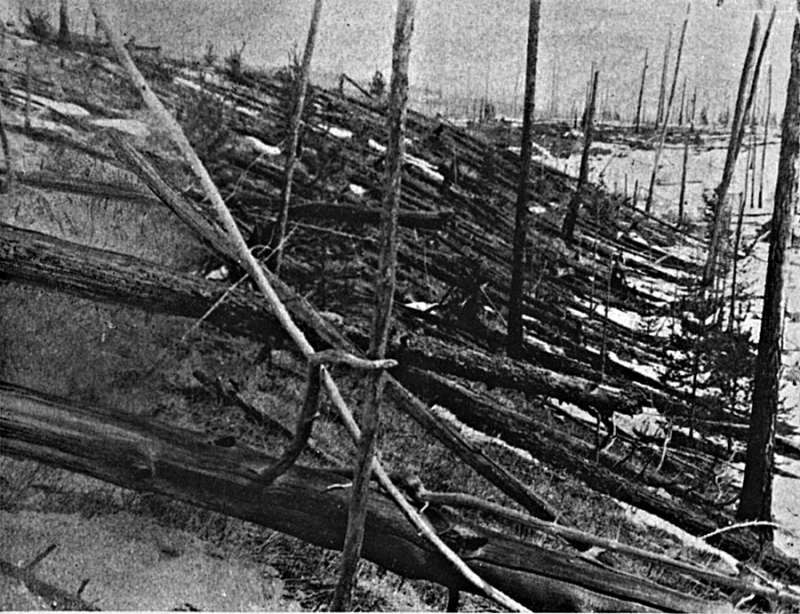 |
Астронет: Астрономическая картинка дня Тунгуска: крупнейшее столкновение последнего времени http://variable-stars.ru/db/msg/1253954/eng |
Credit & Copyright: Leonid Kulik Expedition,
Wikipedia
Explanation:
Yes, but can your meteor do this?
The most powerful natural explosion
in recent Earth history occurred on 1908 June 30 when a
meteor exploded above the Tunguska River in
Siberia,
Russia.
Detonating with an estimated
power 1,000 times greater than
the
atomic bomb dropped over
Hiroshima, the
Tunguska
event
leveled trees over 40 kilometers away and shook the ground in a tremendous earthquake.
Eyewitness reports are astounding.
The above picture was taken by a
Russian expedition
to the Tunguska site almost 20 years after the event,
finding trees littering the ground like toothpicks.
Estimates of the meteor's size range from 60 meters
to over 1000 meters in diameter.
Recent evidence suggests that nearby
Lake Cheko
may even have been created by the
impact.
Although a meteor the size of the Tunguska can
level a city,
metropolitan areas take up such a small fraction of the Earth's surface that a
direct impact on one is relatively unlikely.
More likely is an
impact in the water near a city that creates a dangerous
tsunami.
One focus of modern astronomy is to
find Solar System objects
capable of creating such devastation well
before they impact the Earth.
Authors & editors:
Robert Nemiroff
(MTU) &
Jerry Bonnell
(USRA)
NASA Web Site Statements, Warnings,
and Disclaimers
NASA Official: Jay Norris.
Specific
rights apply.
A service of:
LHEA at
NASA /
GSFC
& Michigan Tech. U.
